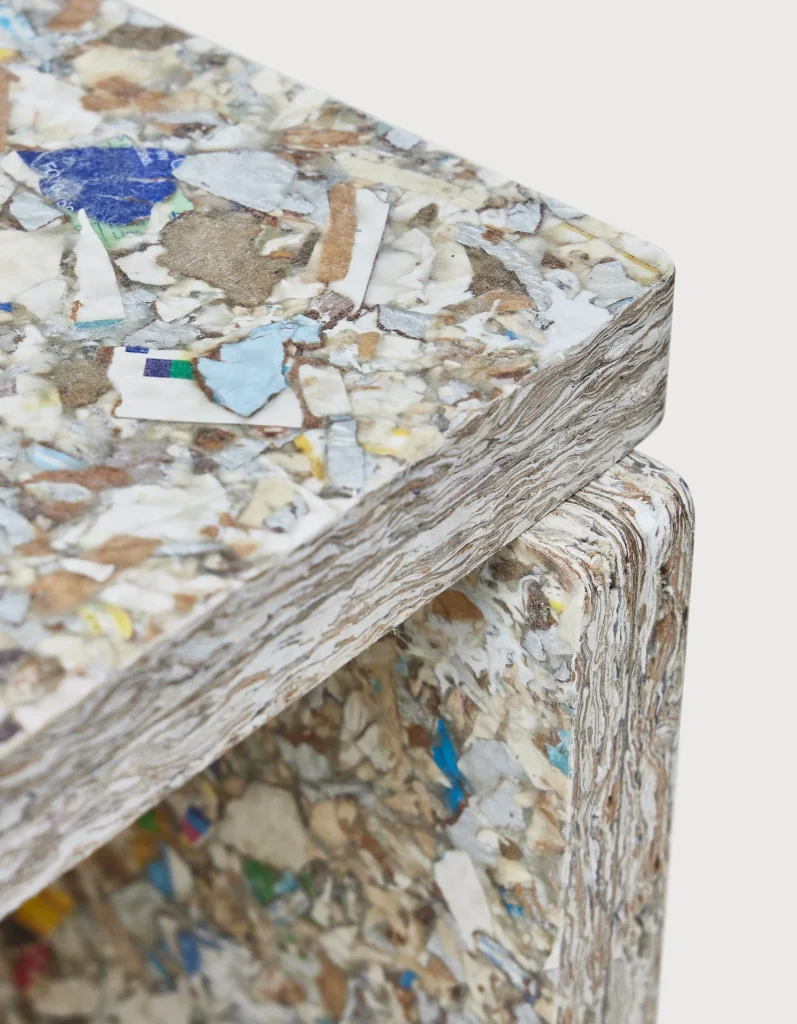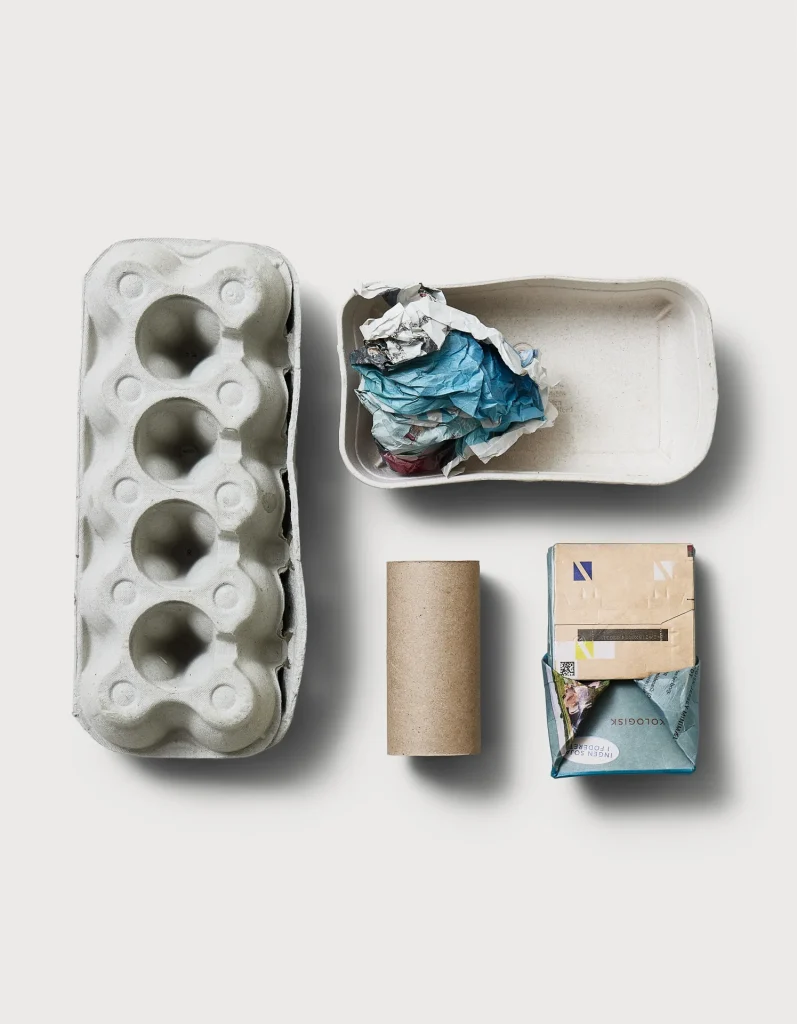Free Deliveries to all European Countries
|
5 years warranty
|
FSC®-certified
Free Deliveries to all European Countries
5 years warranty
FSC®-certified
Words and Images by Form & Refine
Rethinking Resources for a Sustainable Future
The planet’s resources are under pressure, which makes the development of new materials a crucial necessity. It is also essential to study the potential of new material flows that rethink excess materials from industry, for example, just as we need to develop brand new materials from waste that is recirculated and used to make new composite materials.
Giving New Life to What We Discard
Recycled waste has been shown to have huge potential. Pack Wall Design Board from the Swedish company Recoma is a good example. Made from recycled household juice and milk cartons in a mix of cardboard, plastic and aluminium, it starts out as a composite material. Recoma makes a virtue of this necessity, as the combined elements both make up the physical material and contribute to its aesthetic expression. This also means that the components do not need to be separated when the material is discarded. In a circular process, it is simply melted down to re-emerge as new Recoma boards.
In other words, Pack Wall Design Board from Recoma is made of fully recyclable waste and reduces both waste and CO2 emissions. In fact, this new material annually recirculates 7,000,000 kg of Nordic packaging waste that would otherwise have been incinerated and emitted close to 5,000 tons of CO2. In addition, the production does not require clear-cutting and uses no additives or chemicals. All it takes is energy and the raw material that comes from discarded cartons. This is not just a new material but a new mindset, an innovative paradigm and a practical way to transform refuse into something useful while also reducing our carbon footprint.


Exploring New Possibilities in Design
The design boards have the same load-bearing capacity and functionality as wood. Designer Jonas Herman, who created the new Remake Stool says,
“The evolution of materials is very significant for both design expression and climate, just as the choice of materials affect our perception of aesthetic and ethical qualities. It was interesting to work with a brand new type of material, which is completely directionless. The fact that the material has the same expression in large surfaces and edges lends the stool an almost monolithic expression. Just like wood, the material makes each stool unique, because it has a varied appearance from batch to batch.”
With their built-in stories, new materials generate new narratives and references and become markers of a time in which waste is transformed into resources in new material flows. Hopefully, our beleaguered planet will be able to get its head above water, as more and more recyclable and sustainable materials are developed from available resources, such as waste.